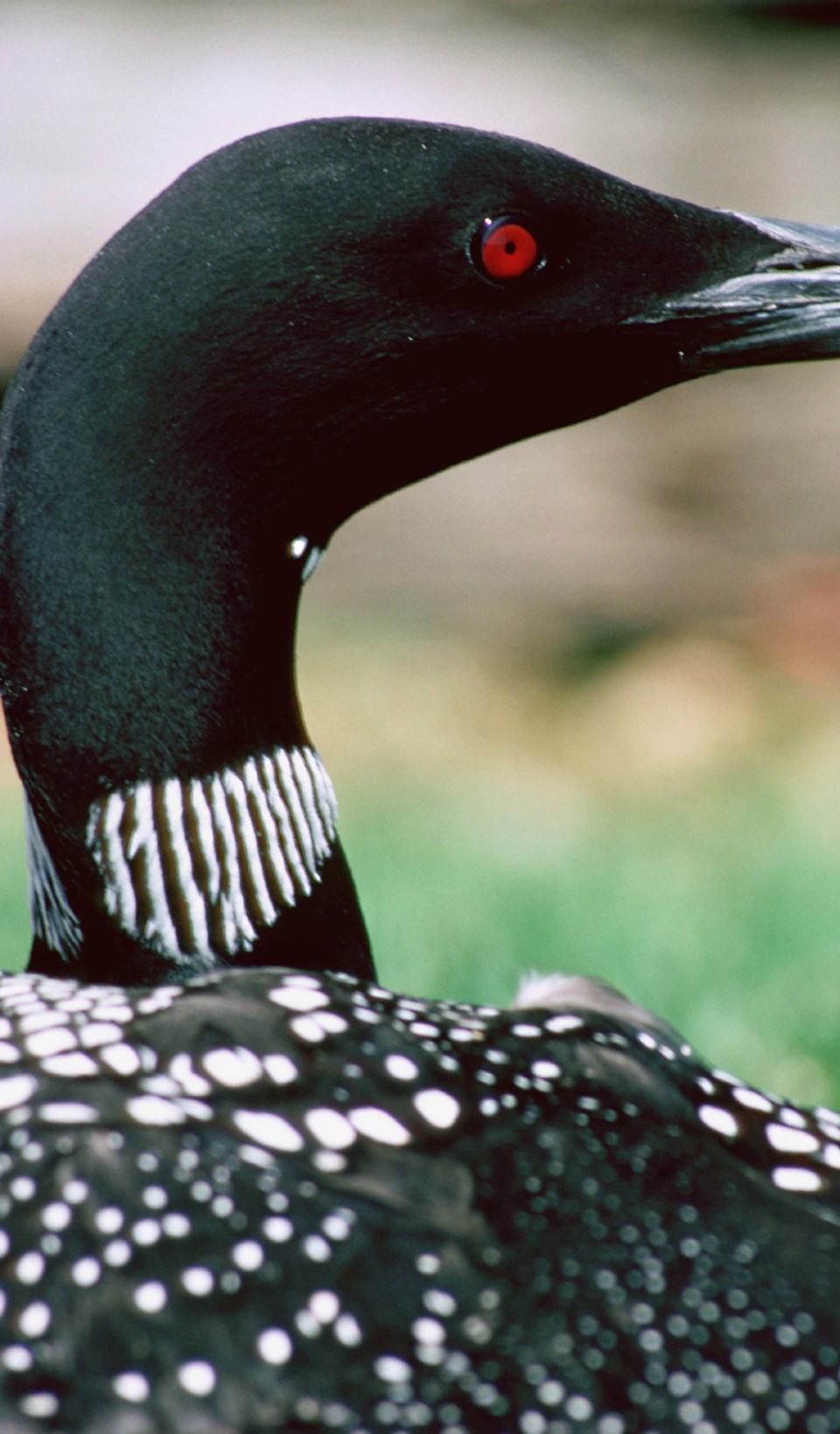The common loon is a bird that is familiar to most if not all of us. If you haven’t seen one in the wild then no doubt the image of a loon has appeared before you as a calendar photo, a company logo, a magazine article or within a tourism promotion.
Not only are they visually impressive with their striking black and white feather pattern, their yodeling voices always add an eerie attraction to lakeside campers everywhere.
It’s one thing to see a loon, but to hold one is a rare event and is usually the result of either a tragic event or very unusual circumstances. In all my years of interacting with wildlife only twice have I had a loon in my hands, one dead and the other very much alive.
The dead one was discovered floating in the water of Georgian Bay, noted while doing a survey of the area of double-crested cormorants (a few decades back before the population explosion of cormorants was really noted). The large size and white belly made the body quite easy to see as it bobbed in the waves.
Once hauled aboard, the demise of this particular bird was obvious: it had caught a fishing lure thinking it was actual food and the two sets of treble hooks had made it impossible to spit back out. A length of fishing line was loosely wrapped around its body.
I have no doubt that whoever the angler was that had been holding the rod was as embarrassed and upset about accidental interaction as anyone would be. But a loon is a large and heavy bird and I can see how the breaking of the line and escape could be possible.
We all marvelled at the thick plumage, the large and dagger-shaped beak, the wide webbed feet and, of course, that plumage that looks like bright white stars on a black summer night’s sky. The carcass was turned over to the Canadian Wildlife Service for further examinations.
This week’s story comes from an article sent to me from a reader who noted a news article from Wisconsin that reported dozens of loons falling from the sky in late April. The loons are in the middle of their northbound migration and often fly at night, very high and in small flocks.
It seems that the birds flew into a freezing rain situation at high altitude that resulted in their wing feathers being iced over and the ability to fly was removed. They crash-landed all across a rural area near Milwaukee, alive but pretty bruised up. Despite the ground level temperature being warm enough to melt the ice, the loons were far from safe as they could not get airborne.
Loons are a very old line of avian creatures, and their leg placement is akin to that of a penguin, in that the legs are very far back on the body. While they cannot stand like a penguin neither can they walk upright. A loon is a marvel on and in the water but unfortunately is ‘a fish out of water’ if on land.
Normally, a loon needs about a quarter mile of open water to make its takeoff, a combination of speed obtained by wing flapping and an initial very fast swim that turns into a run atop the water. So they can fly and they can swim but on land the best they can do is a belly waddle.
The Wisconsin situation had the local wildlife rehabilitation centres on full alert as loon after fallen loon was discovered in muddy corn fields and small cow ponds. After checking them over, the healthy ones were taken to a nearby lake and released to continue their migrations.
Which leads me to the story of my second close encounter with a loon, this time one that was very much alive and kicking!
A call came to me that a person had a loon in a box, didn’t know what to do with it and would I be interested in picking it up. The caller failed to mention that this boxed loon was alive and not at all happy to be in such a container.
Thankfully, as I flipped open the cardboard flaps for a look-see, the darting dagger that flashed out missed my face by a slim margin! As I quickly recovered from my surprise of finding a live loon and miraculously still having my eyes intact, the caller intoned, “Geez, it sure does have some spunk to it, eh?”
The bird had been found on the side of a paved road and the determination that we came up with at the time was that the shimmering of heat waves may have led the loon to think it was a water surface. After a bumpy landing it could not get airborne.
This all happened long before wildlife rehab centres were established, so it was up to me to somehow release the loon.
After several phone calls, permission was granted to let it go at Second Lake within Awenda Provincial Park. I heaved a mighty sigh of relief as the box was tipped over into the shallow waters of the shoreline and the loon swam out, almost nonchalantly.
It gave a short call, dove beneath the surface and, hopefully, found a long overdue meal.


